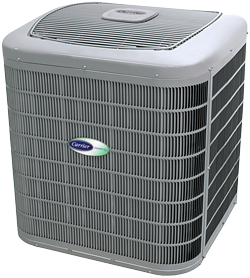Humidity is as much of a trademark of Florida as white sand beaches, Disneyworld, or alligators. Our almost tropical climate lends itself to high levels of moisture in the air through much of the year, especially in the spring and summer months, and that can lead to a miserable existence, especially if you don’t know how to properly manage humidity levels inside your home. Keeping the moisture levels balanced in your home is important. Too much humidity can lead to issues like:
- mold and mildew
- water (moisture) damage
- dust mites (they thrive on humidity)
- difficulty managing the temperature inside your home
Whereas not enough humidity can cause problems including:
- Breathing issues for you and your family members
- Dry skin and/or eyes
- difficulty managing the temperature in your home.
Did you notice the repetition in there? Humidity is a HUGE factor in your home’s comfort levels, and that directly relates to how well your AC does (or doesn’t) function. While low humidity and dry air are less comfortable and can cause some physical problems for you, it can be easily remedied by adding a humidifier to your room at night, using plenty of moisturizer, etc. until the humidity balances out again in the warmer months. However, reducing humidity in your house does more than make you more comfortable; it mitigates many of these above-mentioned risks to your house itself. With a few simple measures you can help maintain the proper moisture level in your home, and lower the humidity.
First and foremost, you should focus on ventilation. Ever gone camping? Even in mild temperatures, the temp inside a tent can rise quickly if you have the windows shut, and you’ll notice moisture developing inside the tent walls. By opening the windows, you release the water vapor being released by your own breathing, and you’ll notice that the temperature not only seems much cooler inside, but drier as well! The same concept applies to your house. Moisture will accumulate inside if you don’t have proper ventilation, especially in areas like kitchens, bathrooms, and laundry rooms. Use vent fans whenever possible, and in bathrooms, leave them running for a period of time after taking a shower to help remove moisture remaining in the air. Don’t have vent fans? Crack windows near the area to let moisture out, and consider placing a regular fan in the path of the doorway to pump air (and water vapor) out.
In addition to ventilation, you should consider investing in a dehumidifier device if lesser measures fail to give you the results you want. A dehumidifier will save you money in the long run if your moisture levels are causing mold, mildew, and rot issues in your home. The cost of repairs and renovations that this could lead to are much higher than what a small dehumidifier for your bathroom or basement will be. They can easily be picked up at most big box stores, and come in a variety of models and sizes, so you can tailor a setup to your specific home and situation.
Another important piece of equipment for managing the temperature and humidity levels in your home? Your HVAC system. Maintaining the indoor temperature relative to the outside temperature is vital in keeping humidity levels where they should be. Your air conditioner and/or heater play a huge role in this process. Failure to maintain them and letting them falter will not only mean a VERY uncomfortable environment for you, but will also cause moisture issues like those we mentioned above. Prevent this from happening by scheduling routine maintenance of your HVAC system. For residents in and around Polk, Highlands, and Hardee counties, Ridge Energy Savers is here for you! We offer emergency repair services, as well as maintenance and cleaning on HVAC systems. Schedule your appointment today and let us help you prepare for the seasonal changes coming our way!






